Coordinación
Una coordinación sólida puede evitar vacíos y duplicaciones en las respuestas humanitarias, así como garantizar que los PTM complementen otros tipos de asistencia. Sin embargo, el informe del «Estado Global de los Programas de Transferencias Monetarias» de la CALP Network muestra que la coordinación de la asistencia en efectivo es vista como débil y ad hoc, y que esto está teniendo graves repercusiones operativas.
Los donantes, las ONG y los líderes de los grupos de trabajo de transferencias monetarias (GTM) han pedido claridad sobre tres temas principales relacionados con la coordinación de la asistencia en efectivo:
- Quién debe ser responsable de asegurar una coordinación eficaz de la asistencia en efectivo;
- Cuál es la función y el mandato de los grupos de trabajo de transferencias monetarias, incluso en relación con las transferencias monetarias multipropósito;
- Cómo se debe dotar de recursos a la coordinación de asistencia en efectivo.
Tenemos que basarnos urgentemente en lo que funciona y proporcionar claridad a nivel mundial sobre las preguntas arriba mencionadas, adaptándonos a los diferentes contextos. Hace mucho tiempo que se deberían haber tomado decisiones claras basadas en necesidades operativas y no en la política de las agencias.
Prioridades actuales
El objetivo de la CALP Network es contribuir a seguir progresando en este tema en tres niveles: apoyar a los grupos de trabajo de transferencias monetarias a nivel regional; contribuir a soluciones prácticas para la coordinación de la asistencia en efectivo a nivel mundial; y convocar una discusión basada en la evidencia sobre temas clave, destacando puntos de decisión críticos y oportunidades de progreso.
Contenido destacado
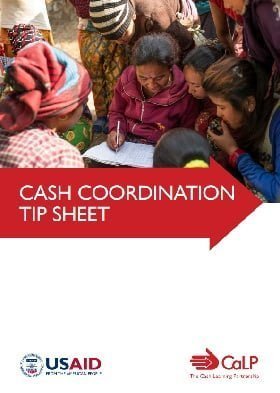
Cash Coordination Tip Sheet
Guidelines and Tools
This tip sheet sets out established best practice, key guidance and resources for all aspects of cash coordination, intended as a clear, accessible and action-oriented guide for those engaged in coordination of cash and voucher assistance (CVA) at the field level.
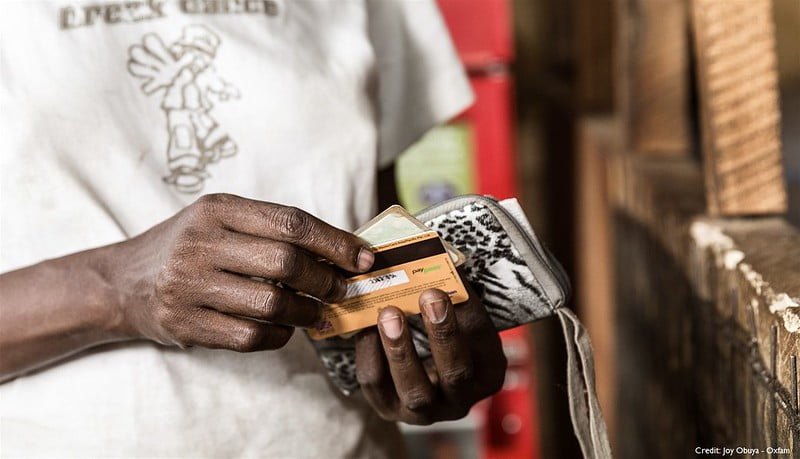
Introducing the Cash Coordination Tip Sheet
Webinar
The CALP Network has developed a tipsheet setting out established best practice and key guidance and resources for all aspects of cash coordination, intended as a clear, accessible and action-oriented guide for those engaged in coordination of cash and voucher assistance at the field level.

Cash Coordination: A proposal from members in MENA
Blog Post
Earlier this year the CALP Network undertook regional consultations to explore options for cash coordination. This blog lays out recommendations from participants from the Middle East and North Africa who sketched out what cash coordination, and coordination more broadly, could look like in future to support a more effective, efficient and accountable response.
Últimos recursos
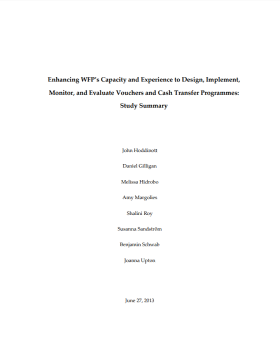
Enhancing WFP’s Capacity and Experience to Design, Implement, Monitor, and Evaluate Vouchers and Cash Transfer Programmes: Study summary
Report
With support from the Government of Spain, and in partnership with the World Food Programme (WFP), researchers from the International Food Policy Research Institute (IFPRI) evaluated four pilot projects to assess the comparative performance of cash transfers, food payments, and vouchers on household food...
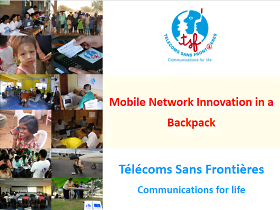
Mobile Network Innovation in a Backpack
Report
Our Core Activities – Rapid response telecommunications centres – Humanitarian calling operations (HCO) – free calls for civilians – Building local capacity for disaster preparedness – Bridging the digital divide with long-term community centers

Logistics and Administration Guideline for Cash Based Interventions – Annexes
Guidelines and Tools
These annexes are designed to be used alongside the Logistics and Administration Guideline for Cash Based Interventions, which aims to support logisticians and administrators to successfully support cash based interventions (CBIs) and to help technical departments too. The annexes include: a the CALP...

Transferencias electrónicas en situaciones de emergencia: guía práctica para su aplicación.
Guía y herramientas
La guía Transferencias electrónicas en situaciones de emergencia: Guía práctica para su aplicación está dirigida a los expertos sobre el terreno de las organizaciones humanitarias que trabajan en respuestas que incorporan transferencias en efectivo entregadas a través de sistemas de pago digital,...
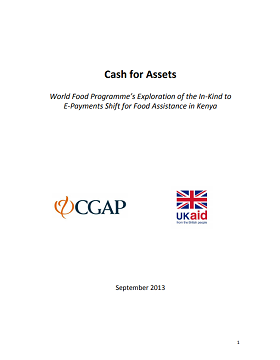
Shifting Food Assistance in Kenya to E-Payments
Report
The shift away from in-kind aid as the preferred mechanism for humanitarian assistance has contributed to the rise of cash transfers in Kenya. In 2008, the World Food Programme (WFP) for the first time shifted strategically from a food aid to a food assistance strategy, recognizing new and diverse ways in...
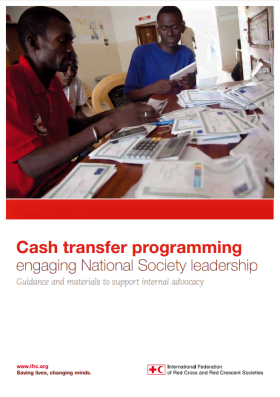
Cash Transfer Programming Engaging National Society Leadership: Guidance and materials to support internal advocacy
Guidelines and Tools
This guidance provides the materials required to run an awareness session for senior representatives of a National Society on the nature of cash transfer programming, its challenges and benefits. National Societies work in different contexts and as such the materials will need to be adapted to suit the...

Transferencias de efectivo en contextos urbanos. Un manual para expertos
Guía y herramientas
Al observar el aumento de la población urbana en todo el mundo y su creciente vulnerabilidad ante catástrofes, el la CALP Network, con financiación de la European Commission for Humanitarian Office (ECHO), puso su empeño en investigar el estado actual y el efecto de los programas de respuesta...

E-Payments in Uganda with Limited Infrastructure
Report
The 2005 Uganda Chronic Poverty Report argued that households in chronic poverty show a range of deficits that include deficient consumption and malnutrition, limited access to health and education, and limited voice and influence. For many of these households social exclusion reinforces their...

Impact Evaluation of Cash and Food Transfers for the Seasonal Emergency Safety Net in Hajjah and Ibb Governorates, Yemen Endline Report
Report
This report is the final impact evaluation of the World Food Programme’s Cash and Food transfer program in Yemen. The program operated in Hajjah and Ibb governorates within the larger Emergency Safety Net (ESN), which provides assistance to qualifying households in rural Yemen. The report details the...

Guidance for DFID country offices on measuring and maximising value for money in cash transfer programmes
Guidelines and Tools
This document is a revised edition of Guidance for DFID country offices on measuring and maximising value for money in cash transfer programmes which DFID published in October 2011.
The guidance is in two linked parts:
1. Part 1 provides a toolkit which sets out key concepts and metrics for analysing...
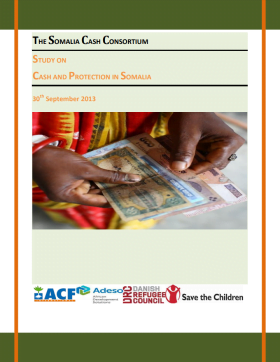
Study on Cash and Protection in Somalia
Report
The worst drought to hit Somalia in 60 years happened in 2011 and came to be popularly known as ‘The Horn of Africa Hunger Crisis’. The drought happened in a context of active conflict and a weak government that could neither protect its citizens nor the humanitarian actors. The Somalia Cash...
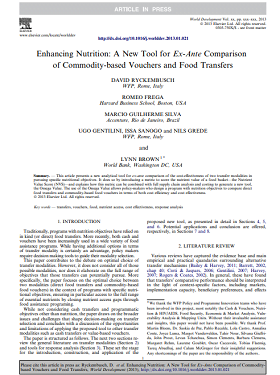
Enhancing Nutrition: A New Tool for Ex-Ante Comparison of Commodity-based Vouchers and Food Transfers
Report
Traditionally, programs with nutrition objectives have relied on in kind (or direct) food transfers. More recently, both cash and vouchers have been increasingly used in a wide variety of food assistance programs. While having additional options in terms of transfer modality is certainly an advantage,...
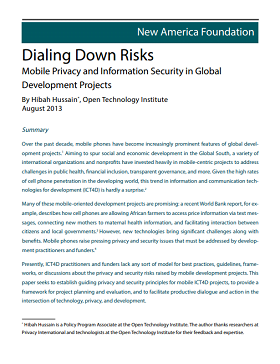
Dialing Down Risks: Mobile Privacy and Information Security in Global Development Projects
Report
Over the past decade, mobile phones have become increasingly prominent features of global development projects. Aiming to spur social and economic development in the Global South, a variety of international organizations and nonprofits have invested heavily in mobile-centric projects to address challenges...
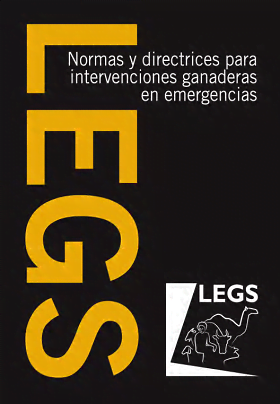
Normas y directrices para intervenciones ganaderas en emergencias (LEGS)
Guía y herramientas
Las Normas y directrices para intervenciones ganaderas en emergencias (LEGS) proporcionan una serie de directrices y normas internacionales para el diseño, la implantación y la evaluación de intervenciones ganaderas para ayudar a personas afectadas por crisis humanitarias. El objetivo de LEGS es...
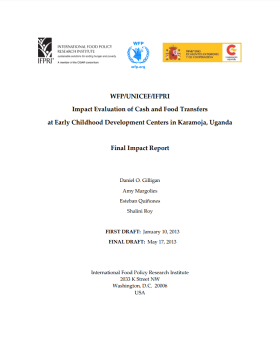
Impact Evaluation of Cash and Food Transfers at Early Childhood Development Centers in Karamoja, Uganda
Report
This report is a revised draft of the Final Impact Report of an impact evaluation study of the World Food Programme (WFP) project to provide food and cash transfers to households with children participating in Early Childhood Development (ECD) centers in the Karamoja sub region of Uganda. The analysis...

Occupations Under Fire: The labor market in a complex emergency
Report
This paper examines the impact of conflict-induced population displacement on urban labor markets. Data from over 900 working-age individuals in Sudan indicates that long-term urban residents in conflict areas have a higher probability of being employed in skilled sectors relative to similar individuals...
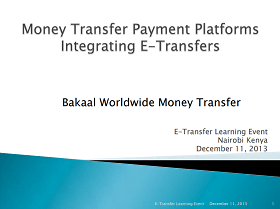
Money Transfer Payment Platforms Integrating E-Transfers
Report
Bakaal Worldwide Money Transfer

2013 Humanitarian Accountability Report
Report
To celebrate the Humanitarian Accountability Partnership’s 10th anniversary, the 2013 Humanitarian Accountability Report reviews progress made over the past decade, and looks at the innovations the sector has adopted to make itself more accountable to populations affected by crises.

Supply‐Chain Research Opportunities with the Poor as Suppliers or Distributors in Developing Countries
Report
Many social enterprises and some companies have developed supply chains with the poor as suppliers or distributors to alleviate poverty and to create revenues for themselves. Such supply chains have created new research opportunities because they raise issues fundamentally different from those examined...
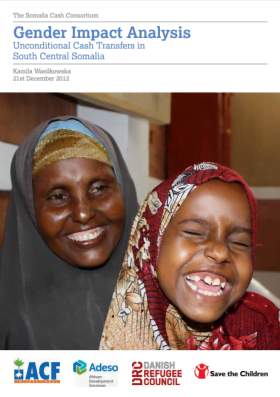
Gender Impact Analysis: Unconditional cash transfers in South Central Somalia
Case Study
The Cash Consortium is a group of four NGOs (ACF, Adeso, DRC and Save the Children) that came together in mid-2011 to coordinate their aid response and use unconditional cash grants to meet the basic food and non-food needs of the most vulnerable households in South Central Somalia. The primary objective...